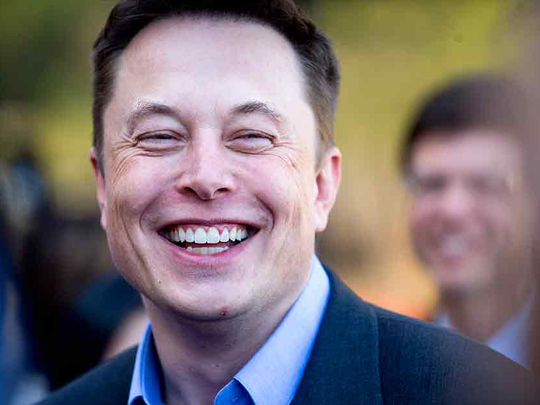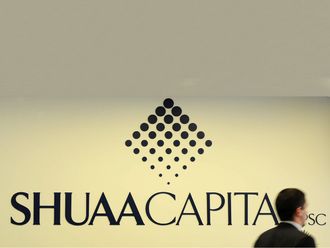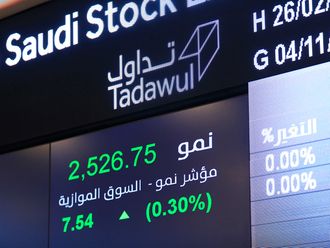
It exploded seconds after take-off, the majesty of a rocket launch erupting suddenly into a shrapnel-spewing fireball. Then, months later, another unmanned launch went catastrophically awry: A Russian rocket spun wildly out of control after it reached orbit, eventually burning up in the atmosphere as it crashed back to Earth.
Two rockets incinerated. Millions of dollars wasted. Several tonnes of food and cargo destined for the International Space Station gone.
On Sunday, Elon Musk’s SpaceX was to resupply the orbiting laboratory. And with the failures of the Orbital Antares rocket and Russia’s Progress 59 spacecraft, the pressure is on. Not just for the billionaire’s upstart space company, and its streak of seven straight successful launches to the station, but the future of the private space industry SpaceX’s improbable success has helped spawn. But the SpaceX rocket exploded minutes into the launch. The next launch is scheduled for September.
Once upon a time, space travel was purely the province of governments, which viewed it as an ancillary extension of their power and prowess. But in recent years, a “new space” movement has fuelled the growth of a commercial space industry that is in large part backed by American billionaires and their seemingly wild goals of colonising Mars, transforming humans into a “multi-planetary species” and making space travel the next tourist attraction.
But after two high-profile failures, there is suddenly a lot at stake — and questions about a still nascent industry where failure is common, expensive and measured in mushroom-cloud plumes of smoke. Another explosion could undermine Nasa’s bold experiment to contract out missions to the space station so that it could pursue the more grandiose mission of flying to Mars.
And it could test whether the privatisation of space is really viable, or the quixotic, unattainable dream of a class of billionaires — including Musk, Amazon’s Jeff Bezos, Microsoft’s Paul Allen and Virgin Galactic’s Richard Branson — who are investing millions on the high-stakes wager that humans will one day fly to the cosmos the way they do cross country.
“When you’re at a launch you’re on pins and needles every time, and you do breathe a sigh of relief every time there is success,” said Eric Stallmer, the president of the Commercial Spaceflight Federation. “That’s why the eyes are on our industry — because the difference between success and failure is enormous. But I also feel that we’re getting a lot more successes than failures under our belt. Not that failures won’t happen.”
The industry got a huge boost when OneWeb, which is building hundreds of small satellites to beam the internet from space, announced a deal to launch more than 65 rockets in what it said was the largest commercial rocket launch deal ever. Branson’s Virgin Galactic, a backer of OneWeb, scored 39 of those launches, a significant win for the company after a test flight crashed last year, killing one of the pilots.
Nasa also recently awarded contracts to SpaceX and Boeing to fly astronauts to the space station by as early as 2017. Those launches would be the first time astronauts have flown to space from US soil since the retirement of the space shuttle in 2011, and they would end the US’ reliance on Russia, which charges more than $70 million (Dh257 million) a seat to ferry astronauts to the station.
With all these developments, the industry is now at “the tipping point” after years of struggling, said Greg Autry, a professor at the University of Southern California who studies the space industry.
“I would bet on the genius billionaire before the cynics,” he said.
For SpaceX, Sunday’s trip to the space station represents the rise of a company built from scratch by an internet billionaire turned rocket scientist whose goal is to save humanity by colonising Mars. After several failed test launches that nearly bankrupted the company before it really got started, Musk’s SpaceX has quickly grown into one of the world’s premier space flight companies. And as Orbital ATK recovers from its failed launch, SpaceX is now the US’ only way of sending supplies to the space station.
In addition to the immediate exigency of delivering food and supplies, SpaceX’s launch will be carefully watched for a daring bit of rocket aerobatics: its next attempt to land a rocket booster on a platform floating at sea.
The company has come very close to pulling off the unprecedented feat of landing a 14-storey tall rocket booster upright on the platform it calls a “drone ship” floating in the Atlantic Ocean after hurtling through the sky.
During the last attempt in April, the rocket seemed on course until the last moment when it suddenly veered sideways and couldn’t right itself in time. Musk said the crash was due to “slower than expected throttle valve response.”
The ability to reuse rocket engines, which are typically discarded into the ocean, would dramatically lower the cost of space flight. And SpaceX is one of several companies pursuing ways to do it.
United Launch Alliance’s new rocket, the Vulcan, is being designed so that its booster engines would be captured in mid-air and then reused, for example. The same is true for Bezos’s Blue Origin space company. Its New Shepard vehicle would launch, then return to Earth, touching down vertically.
But Stephanie Schierholz, a Nasa spokeswoman, said that the International Space Station’s supplies would last until the fall, but she could not provide a precise date. There are eight more flights scheduled this year, including several this summer, “so there are plenty of ways to ensure the station continues to be well-supplied,” she said.
On, July 3, the Russians are scheduled to fly another Progress 59 to the station before three more crew members arrive later in the month. Then, in August, a Japanese HTV-5 is scheduled to send more supplies, followed by another SpaceX launch in September.
Orbital is also expected to fly sometime later this year in what would be the first flight since the explosion.
SpaceX has surprised many industry officials with its quick and growing success. In addition to the Nasa contracts, worth billions, it recently was certified by the Pentagon to deliver national security payloads to space.
But it hasn’t been easy. Last summer, an unmanned test rocket blew up over Texas, and Musk acknowledged the risks inherent in space flight. “Rockets are tricky,” he tweeted at the time.
And he still gets nervous every time one of his Falcon 9 rockets ignites. “Still so damn intense,” he tweeted after a recent launch. “Looking [forward] to it feeling normal one day.”












